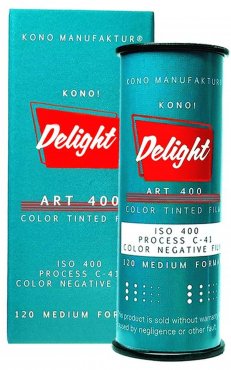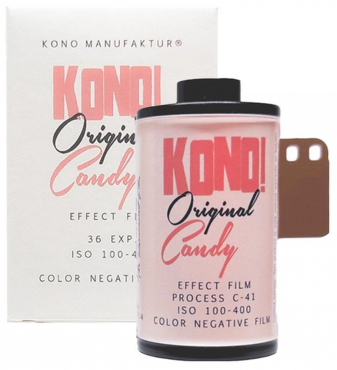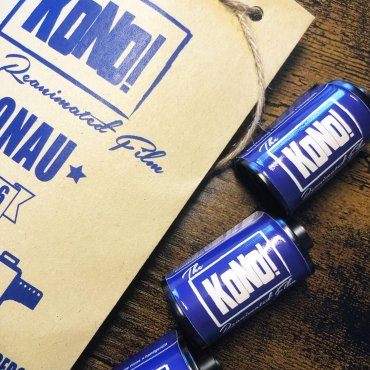There was a time when things looked bad for analogue photography. With the increasing spread of digital photo technology, compact digital cameras and finally also digital SLR cameras, it came about that hardly any photographers were still interested in analogue photography. In the meantime, however, the trend is increasingly going back to good old analogue photography. There are several reasons for this. For example, many photographers enjoy the retro feeling that comes with taking pictures with an analogue camera.
Analogue photography requires more knowledge about photographic technology than digital cameras. With the latter, it is enough to press the shutter button. If a photo doesn't turn out, it is deleted or later reworked accordingly on the PC. It is not that simple in analogue photography. Here, for example, the photographer decides with the choice of film what the picture will look like later, he does not have as many attempts as he likes, he cannot check the result directly and the possibilities for later post-processing are also limited to the developing process. It is precisely this greater challenge that tempts many photographers to take a closer look at analogue photography.
The most important basis for analogue photography - apart from the actual camera - is of course the analogue film. In this context, colour negative films are very popular today. They offer photographers a wide range of different applications. Thus, in our shop you will find colour negative films for every demand: no matter whether you need a film for uncomplicated indoor shoots, for portrait, fashion or advertising photography or for photos in nature, you are sure to find what you are looking for in our shop. We also offer colour negative film for shooting with or without flash. The manufacturers represented in our range include:
These manufacturers still produce colour negative films for several formats and in different sensitivities, ranging from ISO 50 to ISO 800. Feel free to take a closer look at our range of colour negative films and choose the ones that suit your needs. If you are still unsure about your choice, feel free to scroll down to the bottom of the website. There we will give you more information about colour negative film and its advantages. We also provide tips for your purchase.
Basically, colour films can be divided into two major upper classes: First, there are films for colour slides, also called reversal films or colour slide films, and second, there are the films available here for photo prints, called colour negative films. Colour slide films are slide films. The film that is inserted into the analogue camera is therefore later directly cut into the slides that you receive after development. The situation is different with colour negative films: Here, the film is developed as negative film and then enlarged to make the colour photographic prints. Which type of film is best for you depends on both your individual requirements and the shooting situation in which you want to take photographs. Almost all amateur photographers nowadays shoot with colour negative films. They are simply more practical and offer many advantages:
It creates great images that are easy to look at and show around or stick in a photo album as a memento
The colour images can be enlarged and also transferred to a videotape
The exposure latitude is up to ± 3 f-stops
The colour reproduction is very good
Sharpness to the smallest detail are realisable
Memories can also be digitised thanks to good scanning properties
The films are almost always suitable for the standardised C-41 development process, which allows for quick and easy development in the drugstore, in the photo lab or even at home
In contrast, colour slides are usually viewed with a slide projector or in handheld viewers. However, it is also possible to make prints of colour images or enlargements from them, or to transfer them to a video tape. Slides are also cheaper if no prints have to be made. In general, slide films are considered to enhance contrast, which is why it is possible to use them to add pep especially to situations with dim or low-contrast lighting. However, with colour slide films it is also more important to ensure correct exposure. Colour negative films, on the other hand, are suitable for capturing a wide range of colour contrasts. If the exposure values are not set exactly, this does not have too serious an effect on the result. All in all, it can be said that the decision whether to shoot with colour negative film or colour slide film depends on both your individual needs and the shooting situation. It does not have to be an either/or decision, because you can of course use both types of film alternately.
The colour negative films from AfgaPhoto called "Vista" are recommended. They offer excellent colour, a practical ISO gradation and are also quite inexpensive. When choosing the ISO sensitivity, you should bear in mind that the ISO value must be maintained for an entire film. So you cannot simply change the ISO value in between, as you can with a digital camera. Therefore, you should choose a film speed with which you can cope well with all photo situations. ISO 100 is considered a film for good weather and is especially suitable for outdoor photography. All-weather film is the ISO 200 version, while the ISO 400 is also suitable for poor light.
In addition to Agfa, Fujifilm offers a wide range of colour negative films for beginners with its Superia series. Here the film speed starts at 200, but there are also films with ISO values of 400, 800 and even 1600. Beginners make a good choice with the Fujifilm Superia X-TRA 400, as this universal colour negative film is suitable for almost every shooting situation: snapshots in excellent weather can be realised with it just as well as shots in rather poor light conditions. A special feature of this film is the optimised dye coupler and crystal technology. The film is very fine-grained, reproduces colours excellently and offers extremely good sharpness.
Kodak also offers suitable colour negative films for beginners in analogue photography. For example, the medium-sensitive Kodak Gold 200 film with its very good sharpness is ideal if you want to enlarge your prints. This colour negative film is suitable for both daylight and flash photography. Its latitude is so large that it still delivers good results even with incorrect exposures of -2 to +4 f-stops.




Simply subscribe and benefit as a newsletter recipient every week: